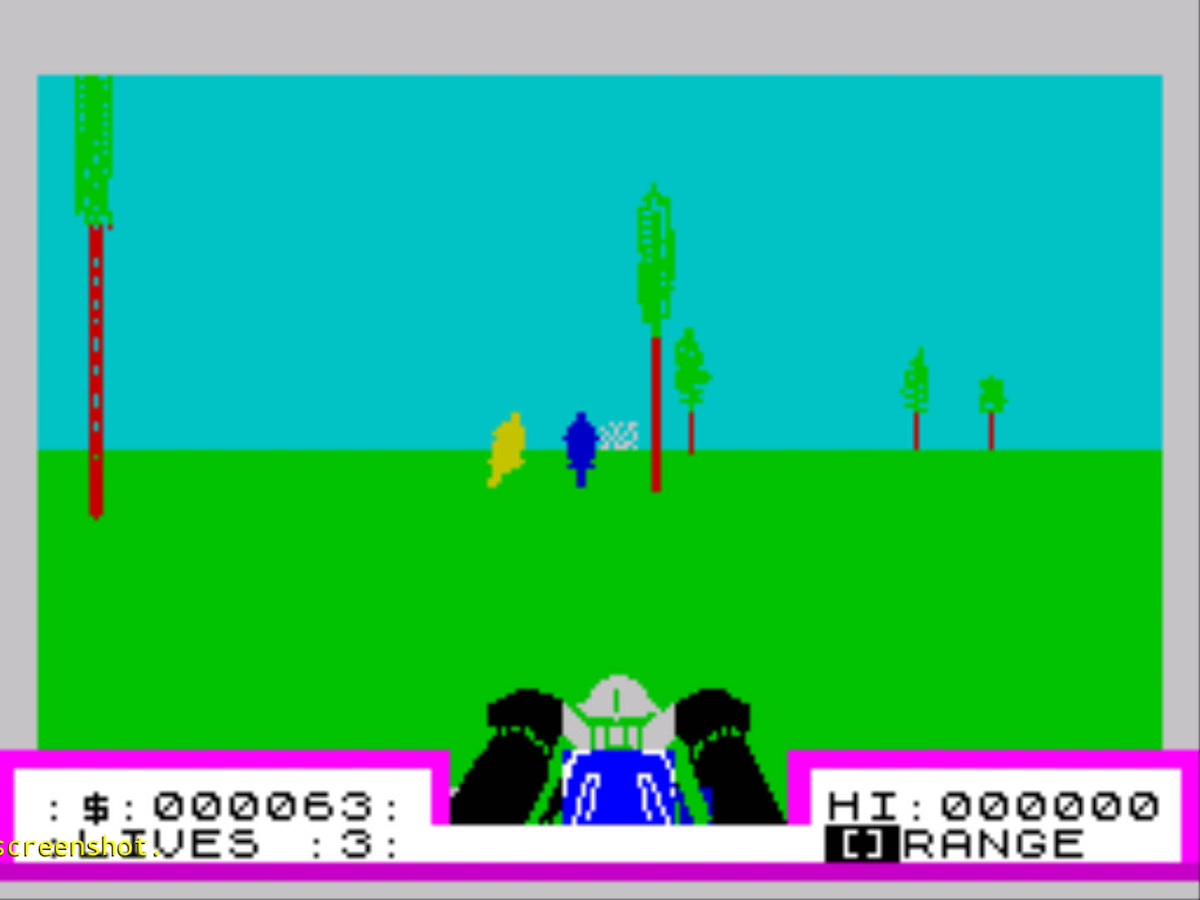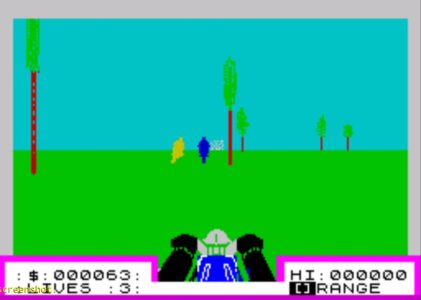Unveiling the Thrills, Chills, and Legacy of a Classic Game
In the ever-evolving landscape of video games, there are titles that have left an indelible mark on the industry. One such game is 3D Deathchase, a pioneering masterpiece that emerged during the golden era of gaming. With its heart-pounding gameplay and groundbreaking 3D graphics, it catapulted players into a digital wilderness like never before. In this article, we’ll delve deep into the realm of 3D Deathchase, exploring its genre, platforms, gameplay, key features, strategies, and even its cultural impact. Join us on a journey through the pixelated jungle as we unearth the secrets of this classic game.
Genre and Platforms
3D Deathchase, developed by Mervyn Estcourt and released in 1983, belongs to the genre of vehicular combat racing. This genre combines the thrill of high-speed racing with the intensity of combat, creating an adrenaline-pumping experience for players. The game was originally designed for the ZX Spectrum, a popular home computer of the time. Later, it found its way to other platforms, including the Commodore 64 and Amstrad CPC, widening its reach and popularity.
Gameplay: A Wild Ride through the Digital Jungle
3D Deathchase plunges players into a visually stunning and treacherous 3D forest environment. The objective is simple yet electrifying: pilot your motorcycle through the dense forest, hunting down enemy riders known as “Hell’s Angels.” Armed with a missile launcher, you must eliminate these foes while dodging trees and other obstacles. Sounds easy, right? Think again.
The game’s perspective, a first-person view from the motorcycle’s cockpit, adds to the immersive experience. The graphics, though primitive by today’s standards, were groundbreaking in the early ’80s, giving players a genuine sense of speed and danger. The 3D effect, achieved through clever programming tricks, was a marvel at the time.
Key Gameplay Features
1. Speed and Precision: 3D Deathchase demanded split-second decisions and precise control. The motorcycle’s speed made the game both thrilling and challenging, requiring players to react swiftly to avoid collisions.
2. Limited Ammo: Players had a finite supply of missiles, adding an element of strategy. Choosing when to fire and ensuring each shot counted was crucial for success.
3. Dynamic Difficulty: As you progressed, the game became progressively more difficult. Enemy riders became faster and more agile, and the forest denser, forcing players to continually adapt their tactics.
4. Realistic Sound: The game’s audio design was ahead of its time. The roar of the motorcycle’s engine and the explosions of missiles added to the immersive experience.

5. Night Mode: 3D Deathchase introduced a night mode, where visibility was severely limited, amplifying the tension and excitement.
Strategies and Cheats
Mastering 3D Deathchase required not only lightning-fast reflexes but also a keen understanding of the game’s mechanics. Here are some strategies to help you survive the digital jungle:
1. Conservation of Ammo: Don’t waste your missiles. Aim carefully and wait for the perfect moment to strike. Running out of ammo can spell doom.
2. Map Awareness: Learn the layout of the forest. Knowing where open spaces and chokepoints are located can give you a tactical advantage.
3. Use the Radar: The game provides a radar display that shows the location of enemy riders. Keep an eye on it to avoid surprise attacks.
4. Night Vision: In night mode, rely on your memory of the terrain and the radar. Patience is key, as impulsive actions can lead to crashes.
5. Practice, Practice, Practice: Like many classic games, 3D Deathchase rewards practice. The more you play, the better you become at anticipating enemy movements and avoiding obstacles.
Bonus: Easter Eggs and Cheats
3D Deathchase had a hidden Easter egg that allowed players to enter cheat codes. One such code, “POKE 5480,0,” disabled the trees, turning the game into a surreal, high-speed chase. While cheats like these were not part of the intended gameplay, they added an extra layer of fun for adventurous players.
Reviews and Cultural Impact
Upon its release, 3D Deathchase received widespread acclaim for its innovation and exhilarating gameplay. Reviewers praised its graphics, which pushed the boundaries of what was thought possible on home computers at the time. The game’s unique blend of racing and combat was also well-received.
The legacy of 3D Deathchase extends beyond the gaming world. It served as an inspiration for future game developers, influencing the design of later vehicular combat games like Road Rash and Twisted Metal. Its pioneering 3D graphics techniques paved the way for the 3D gaming revolution that would follow in the years to come.
Real Non-Wikipedia Links to Reviews and Impact Articles
- Retro Gamer – 3D Deathchase Retrospective
- Polygon – The Legacy of 3D Deathchase
- PC Gamer – How 3D Deathchase Shaped Vehicular Combat Games
Sequels and Examples of Similar Games
The success of 3D Deathchase led to the development of sequels and inspired a generation of game developers. Some notable sequels and similar games in the vehicular combat racing genre include:
1. 3D Deathchase 2 (1985)
The sequel to the original game retained the core gameplay but featured improved graphics and added complexity. It continued to challenge players with intense motorcycle combat in the digital wilderness.

2. Road Rash (1991)
Road Rash, a beloved series that debuted in the ’90s, took the concept of motorcycle combat to new heights. Players engaged in high-speed races while wielding an assortment of weapons, including chains and baseball bats, to defeat rival bikers.
3. Twisted Metal (1995)
Twisted Metal brought vehicular combat to a new level, featuring a variety of bizarre vehicles armed with deadly weaponry. Players engaged in arena-based battles, adding an element of strategy to the chaos.
4. WipEout (1995)
WipEout combined futuristic racing with combat elements, featuring anti-gravity ships armed with energy weapons. It introduced a new dimension to the genre, emphasizing speed and precision.
5. Carmageddon (1997)
Carmageddon embraced the chaotic side of vehicular combat, encouraging players to mow down pedestrians and rivals alike. It gained notoriety for its over-the-top violence and dark humor.
Conclusion
3D Deathchase stands as a testament to the innovation and excitement of early video game development. Its blend of high-speed racing and intense combat set a precedent for future titles in the vehicular combat racing genre. While the game’s graphics may seem rudimentary by today’s standards, its impact on the gaming industry and the memories it created for players are timeless. As we navigate the vast digital jungle of modern gaming, it’s essential to pay homage to classics like 3D Deathchase that paved the way for the interactive experiences we enjoy today.













